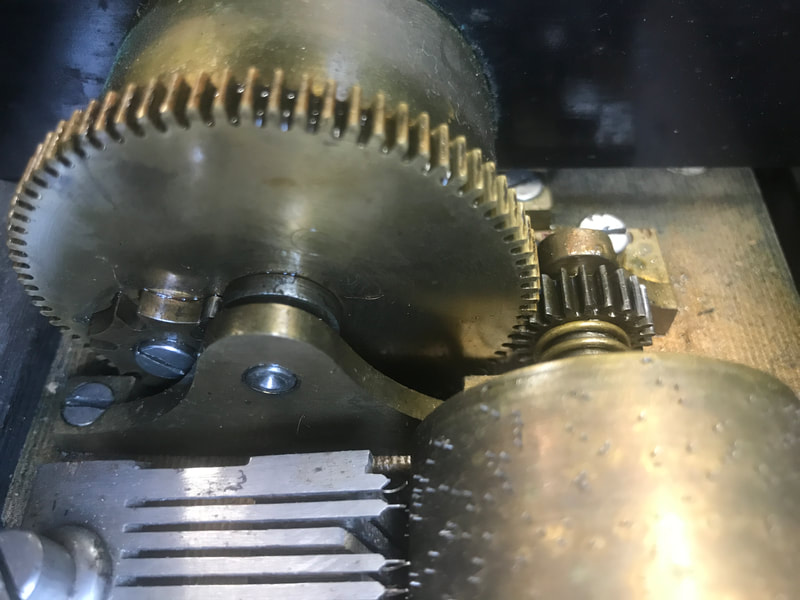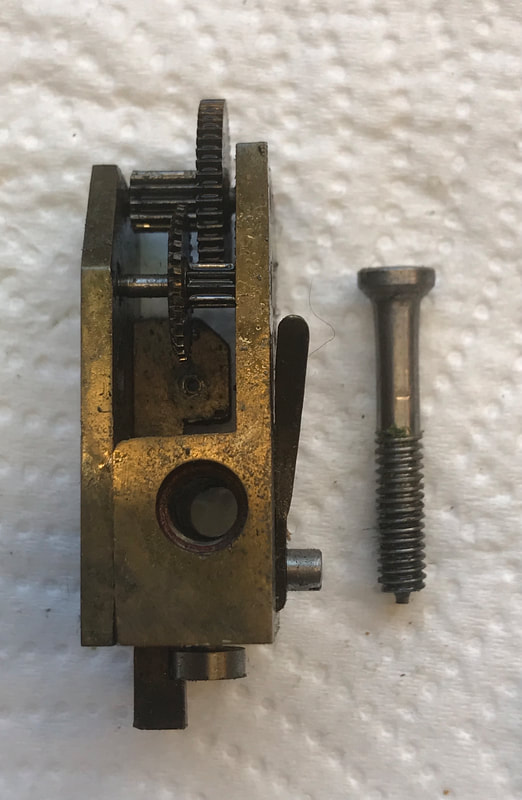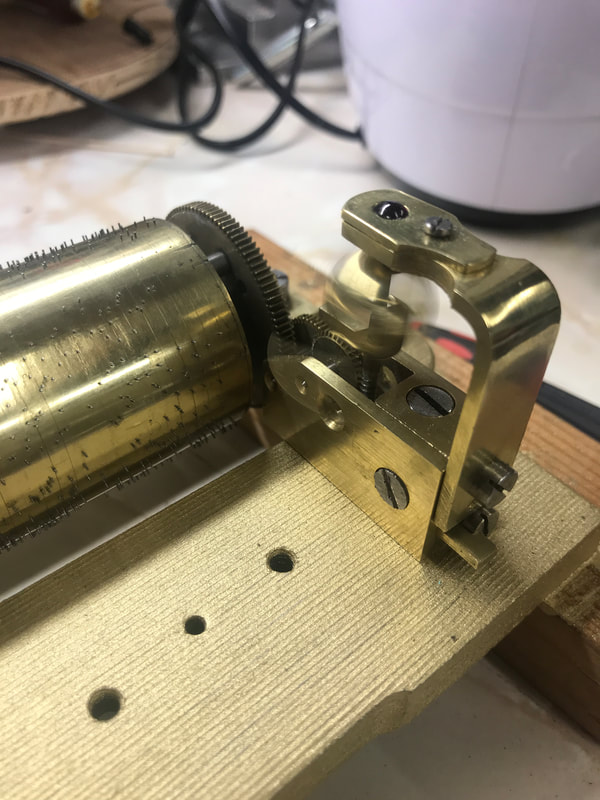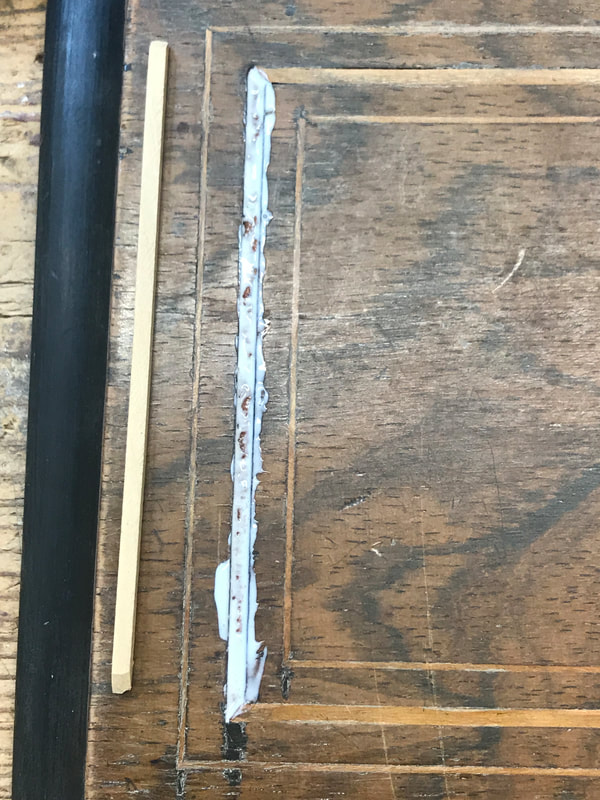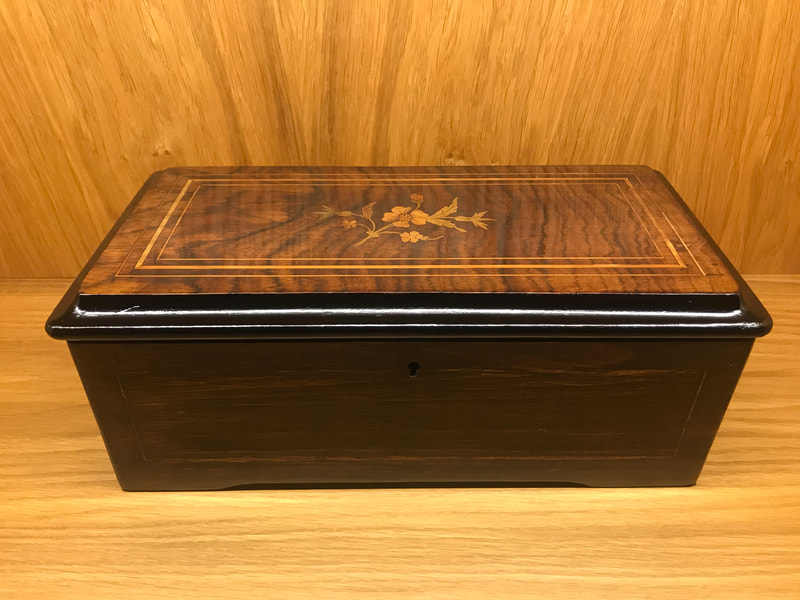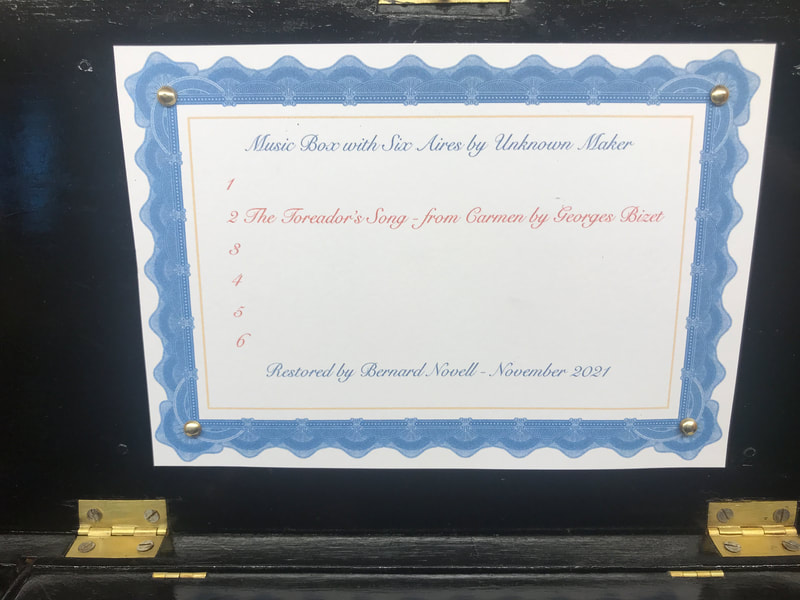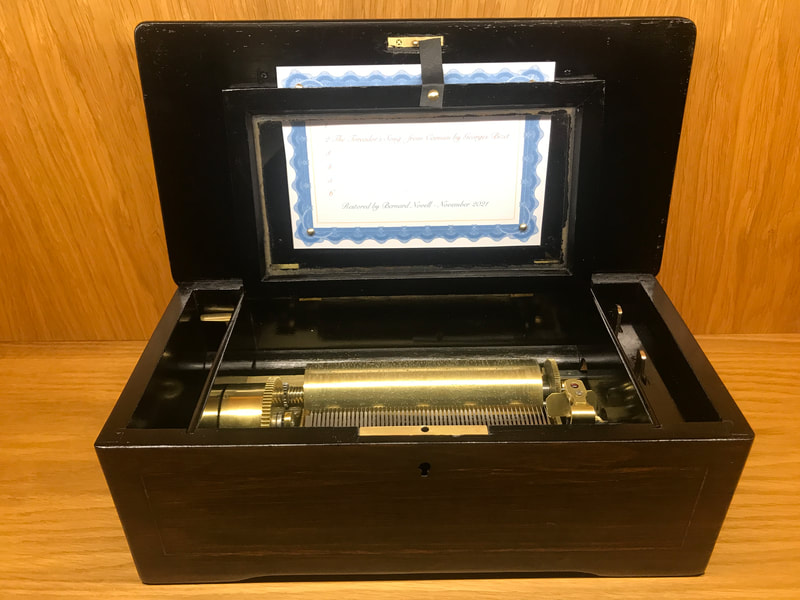6/57 Cartel
This cartel belongs to a friend who entrusted me to restore it to its former glory as it was when it was bought by her grandfather.
It has been stored for some time but the mechanism is in very good order except it needs a good clean and polish and there are four broken comb tips and some missing dampers.
The box had a few minor marquetry issues.
The tune sheet that would help to identify the maker is, unfortunately, missing. However, the second tune I have identified as The Toreador’s Song (1875).
Others have recently been identified as La Jolie Persane by Lecocq (1879) and The Waltz of Madame Favart by Offenbach (1878)
Scroll down for more about the tunes. Can you help identify the other three?
It would be a year to eighteen months after a popular tune was released for it to be found on a music box. We can therefore assume that this box dates to about 1880/81 which ties into its original owner's marriage date.
It has been stored for some time but the mechanism is in very good order except it needs a good clean and polish and there are four broken comb tips and some missing dampers.
The box had a few minor marquetry issues.
The tune sheet that would help to identify the maker is, unfortunately, missing. However, the second tune I have identified as The Toreador’s Song (1875).
Others have recently been identified as La Jolie Persane by Lecocq (1879) and The Waltz of Madame Favart by Offenbach (1878)
Scroll down for more about the tunes. Can you help identify the other three?
It would be a year to eighteen months after a popular tune was released for it to be found on a music box. We can therefore assume that this box dates to about 1880/81 which ties into its original owner's marriage date.
17th May 2021
The mechanism
Removed from box and completely dismantled.
The mechanism
Removed from box and completely dismantled.
The owner decided that they would like to have the comb repaired by a professional repairer who replaced the damaged fingers, any missing dampers, reunite the comb with the mechanism and test / adjust it to perfection.
After the inspection nothing was found to be damaged or missing, in fact it appears to have all original parts including return springs (which is rare).
The bedplate was painted gold and all parts went through a four part cleaning & polishing process.
From now on cotton gloves must be used to handle the brass to avoid oils from the skin causing tarnish.
The governor assembly and spring motor & winder were reassembled before setting the mechanism back onto the bedplate.
The bedplate was painted gold and all parts went through a four part cleaning & polishing process.
From now on cotton gloves must be used to handle the brass to avoid oils from the skin causing tarnish.
The governor assembly and spring motor & winder were reassembled before setting the mechanism back onto the bedplate.
Cleaning and polishing process
1. All the smaller components were immersed in an ultrasonic water bath with a degreaser added, then given several cycles to loosen the dirt and grease. This was rinsed with warm water and an old toothbrush used to aid the process.
2. The same components were immersed overnight in a 7:1 solution for water and Horolene to remove the majority of tarnish.
3. The brass components were scrubbed, using a fine soft toothbrush, using Johnson's Brass Polish. then rinsed and thoroughly dried. The cylinder was also cleaned with the same polish. The holes in the end caps were carefully sealed using strong tape to ensure that no polish entered the inside of the cylinder.
Extreme care must be taken with these two processes as the solutions contain ammonia and other chemicals that can cause health issues, so wear all necessary PPE
4. The brass was polished using Autosol (car chrome cleaner) and buffed to a shine using a fine horse hair brush.
5. The steel components were thoroughly cleaned using various wire brushes and polished using 0000 grade wire wool or fine carborundum paper.
6. The bedplate was degreased using WD40 degreaser and thens scrubbed with a wire brush before being painted with two coats of antique gold acrylic paint and left to dry for several days.
1. All the smaller components were immersed in an ultrasonic water bath with a degreaser added, then given several cycles to loosen the dirt and grease. This was rinsed with warm water and an old toothbrush used to aid the process.
2. The same components were immersed overnight in a 7:1 solution for water and Horolene to remove the majority of tarnish.
3. The brass components were scrubbed, using a fine soft toothbrush, using Johnson's Brass Polish. then rinsed and thoroughly dried. The cylinder was also cleaned with the same polish. The holes in the end caps were carefully sealed using strong tape to ensure that no polish entered the inside of the cylinder.
Extreme care must be taken with these two processes as the solutions contain ammonia and other chemicals that can cause health issues, so wear all necessary PPE
4. The brass was polished using Autosol (car chrome cleaner) and buffed to a shine using a fine horse hair brush.
5. The steel components were thoroughly cleaned using various wire brushes and polished using 0000 grade wire wool or fine carborundum paper.
6. The bedplate was degreased using WD40 degreaser and thens scrubbed with a wire brush before being painted with two coats of antique gold acrylic paint and left to dry for several days.
The comb needed four new tips and some dampers. This work was undertaken by The Music Box Restorer who also reunited the comb with the movement and tested it. See below. Can you see the joins?
The Box
There was not too much serious damage to the box, but the marquetry and boxwood stringing on the top was missing some pieces and the surface looked like it has been varnished. Repairs to the missing inlays was relatively simple and the top was then rubbed down to reveal some lovely grain. The box itself was sound but the outer finish needed tlc. I decided to strip it and re-finish with woodstain and then French polish the whole box. While doing this I made the single boxwood string on the front panel stand out as this had been 'lost'.
There was not too much serious damage to the box, but the marquetry and boxwood stringing on the top was missing some pieces and the surface looked like it has been varnished. Repairs to the missing inlays was relatively simple and the top was then rubbed down to reveal some lovely grain. The box itself was sound but the outer finish needed tlc. I decided to strip it and re-finish with woodstain and then French polish the whole box. While doing this I made the single boxwood string on the front panel stand out as this had been 'lost'.
Polishing the box, starting with black French polish for the interior, inside the lid, and edges of the lid.
Second pass with roughness taken off using 0000 grade wire wool for a super smooth finish. Two or three more coats to go.
The last six images show the final polish immediately after application.
The final result after several months has been well worth the wait and effort. Returned to owner 15th November 2021
|
Toreador's Song by Bizet from Carmen
|
|
A quirk of the system here.
Download really means, open window. The problem is it overwrites the current one, so just navigate back to it when you've listened.
Download really means, open window. The problem is it overwrites the current one, so just navigate back to it when you've listened.
|
Tune 1
|
|
Tune 2 - The Toreador's Song by Bizet from the Opera Carmen
|
|
Tune 3
|
|
Tune 4 - La Jolie Persane by Lecocq 1879
|
|
Tune 5 - The Waltz of Madame Favart by Offenbach
|
|
Tune 6
|



